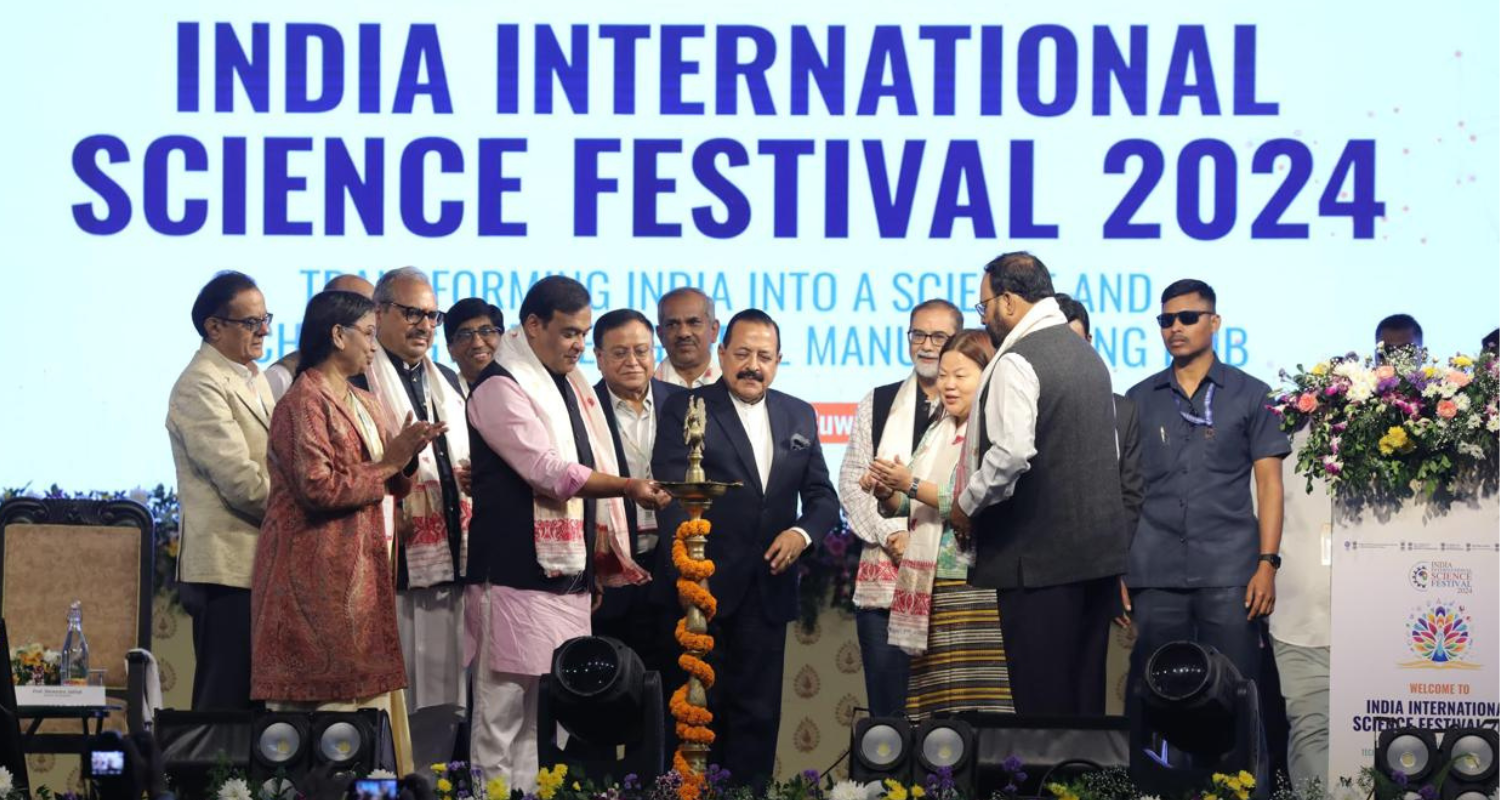The 10th edition of the India International Science Festival (IISF) 2024 concluded at IIT Guwahati on December 4, leaving an indelible mark on India’s scientific landscape.
With 24 captivating events over four days, the festival attracted over 7,000 delegates and 45,000 visitors, including a large number of students.
The highlight of the festival was the stunning 10-metre-high Moon replica, which offered a detailed representation of the lunar surface.
This exhibit became a crowd-puller, reflecting India’s advancements in space science.
Dr N Kalaiselvi, Director-General of CSIR and Chairperson of the IISF Steering Committee, highlighted the focus on regional engagement, saying, “We have developed an action plan focused on North East activities in this IISF2024.”
She also announced support for the winners of the S&T Hackathon, signalling a commitment to nurturing young talent.
Fostering collaboration across borders
This year, the festival introduced new events aimed at broadening its reach and impact.
“Sagarika – The Tale of Earth Sciences” addressed key topics in meteorology, oceanography, and ecology, raising awareness about pressing environmental issues.
“Science Beyond Borders” provided a platform for international collaboration, fostering partnerships among scientists, researchers, and institutions to address global challenges in science and technology.
Similarly, the “Fusion Forum” delved into the potential of nuclear energy in power generation, agriculture, and healthcare, exploring its role in India’s sustainable development.
Another crowd-favourite was the LED light show, Saga of Science Chronicles, which illuminated the history and contemporary achievements of Indian science.
Held daily from 7:30 PM to 9:30 PM, this visually stunning display captivated audiences.

Celebrating the Northeast’s rich heritage
The festival also shone a spotlight on the Northeast region. Events like “Science Odyssey of the North East” discussed the challenges hindering scientific growth in the region and strategies for promoting innovation.
Meanwhile, The Taste of the Hills – North East Food Street celebrated the region’s culinary traditions, offering visitors a chance to savour its unique flavours.
Shri Keshab Mahanta, Minister for Science, Technology, and Climate Change, highlighted the importance of science in driving growth.
“We are working to establish a network for science communication, which includes setting up science centres in 219 development districts. Guwahati will soon have a science city. IISF has provided us with the perfect platform to showcase scientific developments in the North-East region,” he said.
Effective communication emerged as a key focus of IISF 2024, with events like “Vigyanika” and the “S&T Media Conclave” addressing the challenges of making science accessible to the masses.
Organised by CSIR-National Institute of Science Communication and Policy Research (NIScPR), these events aimed to bridge the gap between scientists, journalists, and media professionals.
Dr C Anandharama Krishnan, Chief Coordinator of the festival, expressed gratitude to all contributors at the valedictory function. Prof Devendra Jalihal, Director of IIT Guwahati, reflected on the festival’s legacy, stating, “This IISF has exemplified science and technology's ability to unite and empower.
The legacy of IISF will depend on tangible outcomes that provide solutions to the community, fostering a culture of innovation.”


